The NewZealand Story – The cute but tough platformer
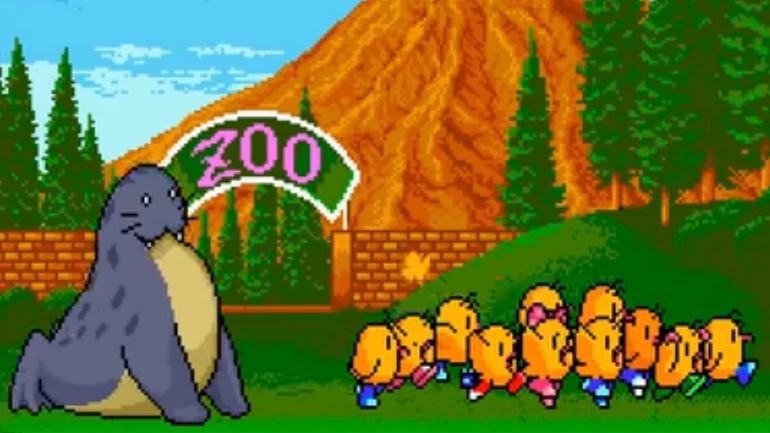
Taito was one of those big names with decades of experience in making games. Among their greatest hits are classics like Bubble Bobble and Arkanoid, but alongside those, there are other gems that shine just as bright—and one of them is The NewZealand Story. Damn the day they put this game in my local arcade because it was the final blow to my already struggling finances (and the reason I had to buy a console).
There it was—black, proud, and with… a horrible left-handed controller (I’m right-handed, what can I do?). Inside, a cheerful little chick ran from platform to platform, shooting lasers at snails (humanity’s sworn enemy in the ‘80s) while trying to rescue his girlfriend, trapped in a cage at the end of the level. After playing for years and thinking I was finally over it—after beating it hundreds of times—I discovered it had been ported to several consoles and computers, that there were emulators to play it, and that there was even a sort-of sequel. Well, I guess I’ll never escape it.
Gameplay of The NewZealand Story
Tiki the kiwi (no, not a chicken) has to travel all across New Zealand to rescue his friends and girlfriend from the clutches of an evil purple walrus (Wally). Not the most original story ever, but you’ve got to admit the setting is unconventional. As for the game itself, it’s simple to explain: Taito gives you some of the best platforming levels ever made (at least back then), and you bring your skills to control Tiki.
The gameplay in The NewZealand Story is classic. Huge screen, jumping, shooting, omnidirectional movement (meaning you can go any direction), kill enemies, and reach the end of the stage before time runs out (or else a really mean red devil will kill you without mercy).
So far, nothing out of the ordinary—but then you start playing and realize the levels are massive, there are over 20 different enemies to face, collecting letters and "extend" shapes gives you extra lives, the difficulty is cranked up to the max, and you’re getting hopelessly addicted… plaff! While you were drooling over the game, some nasty critter shot you right between the eyes. You were already at level 4-3, so close, but… what’s this?
Yep, another little gem of this arcade was that if you made it past 3-1 and got killed by an enemy on your last life, you got a second chance. Tiki would ascend to heaven (different depending on whether you died in zone 3, 4, or 5) and had to find an exit to return to Earth (this was only for experts because the way out was super hidden) or meet the Virgin Mary (what’s she doing here?)—game over. You didn’t beat it, but at least it was a dignified exit.
By then, you’d reached the point of no return. You were hooked, and for weeks, all you could think about were the warps (the game’s secret passages), which balloon was best for certain levels (there were all kinds—simple ones, super-fast swan balloons, indestructible ones, the one you got when you died, the spaceship—and sometimes you could hang from the bottom or ride on top), or how to kill the final octopus in the second stage. And the worst part? Once you finally beat it, you still felt like there was something left to discover. Basically, public enemy number one for anyone’s wallet.
Graphics of The NewZealand Story
Ah, the days when a game with such simple graphics could be called beautiful. The whole aesthetic is so cute it’s almost scary (in the best Pop’n TwinBee style). The backgrounds deserve special mention—they’re incredibly well-made, full of details and drawings that match the area you’re in. Simply delightful (the first screen, where you see Tiki’s girlfriend calling for help, still gets me emotional).
The intro in The NewZealand Story isn’t anything spectacular by today’s standards, but it was charming to see a bunch of partying kiwis getting kidnapped by a walrus. On top of that, there’s a nice variety of enemies (the kind you almost feel bad killing), sometimes filling the screen. And one fun fact: In the arcade version, Tiki did a little dance when entering warp zones. I’ve never seen that dance in any home version.
Music & Sound
There aren’t many melodies in The NewZealand Story—one for the end-of-level bosses, another when time’s running out, one for the sky levels, and the main theme that plays through the rest. It wasn’t exactly varied, but the tunes were catchy, and you’d end up humming them all day—same with the intro music, which is simple but perfect.
There was even a CD with a remix of The NewZealand Story’s theme. As for sound effects, they’re just the basics—one for each weapon, another when picking something up, when you get an extra life… nothing groundbreaking, no voices, but honestly, it didn’t need more.
Gameplay
Final Thoughts on The NewZealand Story
Without a doubt, this game is one of the kings of platformers, and no arcade is complete without a copy of The NewZealand Story. Maybe it’s been overshadowed by Bubble Bobble, Rainbow Islands, and others, but in my humble opinion, it far surpasses them.
Maybe Taito should’ve squeezed a little more out of Tiki and friends since they never made a proper sequel (well, except for Liquid Kids, which some say was meant to be the second game). Still, it got multiple ports to other systems, being identical to the arcade on the X68000 and very close on the Master System and PC Engine. One thing’s for sure—you can’t pass up a chance to try The NewZealand Story.
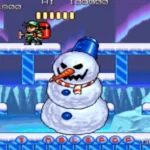 Tumblepop Arcade – Heroes With Superpowered Vacuums!
Tumblepop Arcade – Heroes With Superpowered Vacuums!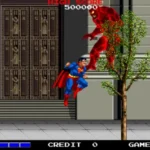 Superman Arcade – The Machine That Never Let You Down!
Superman Arcade – The Machine That Never Let You Down!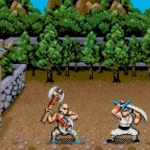 Tiger Road – The Sleeper Hit of Arcade Beat 'em Ups!
Tiger Road – The Sleeper Hit of Arcade Beat 'em Ups! Go Go Mile Smile Arcade: A Classic Retro Gaming Experience
Go Go Mile Smile Arcade: A Classic Retro Gaming Experience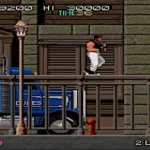 Bad Dudes vs. Dragon Ninja: Reviving the Excitement of 80s Arcade Glory
Bad Dudes vs. Dragon Ninja: Reviving the Excitement of 80s Arcade Glory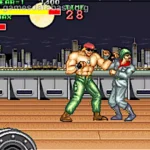 BIG FIGHT: BIG TROUBLE IN THE ATLANTIC OCEAN: Unveiling the Epic Brawl!
BIG FIGHT: BIG TROUBLE IN THE ATLANTIC OCEAN: Unveiling the Epic Brawl!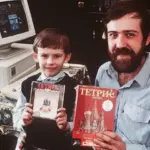 The Bizarre History of Tetris – The Russian Game That Took Over the World
The Bizarre History of Tetris – The Russian Game That Took Over the World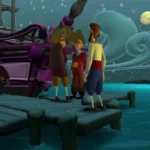 Escape from Monkey Island – PC Review
Escape from Monkey Island – PC Review

Leave a Reply